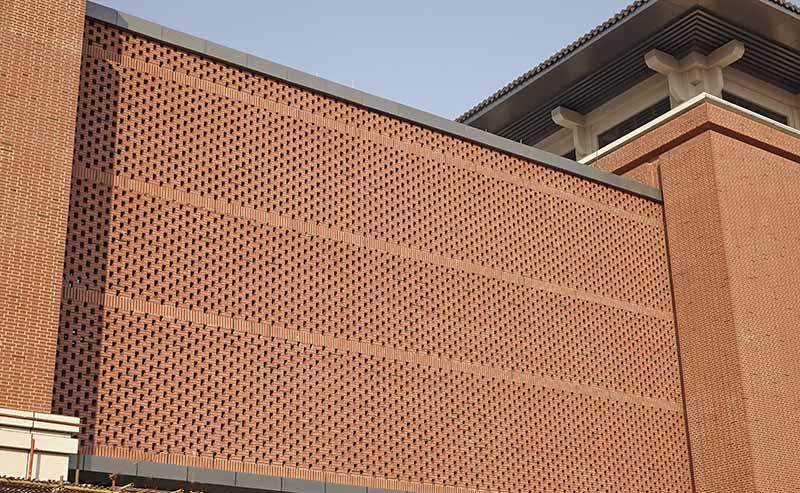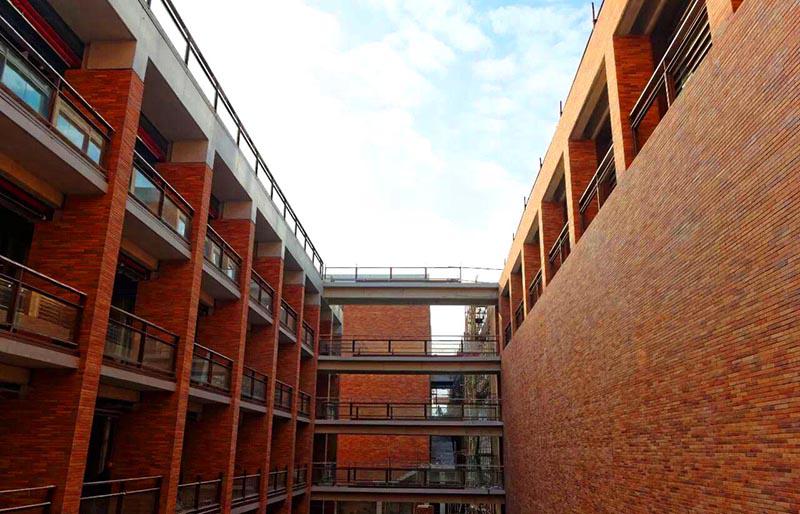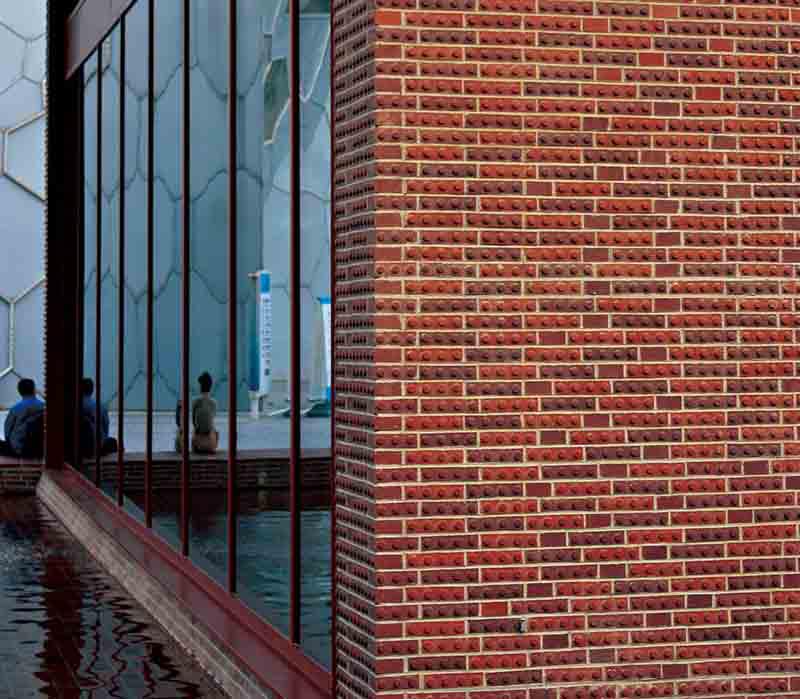Face Brick, also called Vertically Perforated Brick, refers to brick that are made from clay and used as both furnishing and load-bearing body of the building's walls. These bricks are in rectangular (standard) form or irregular (auxiliary) form. They are usually designed with porous structure, for the purposes including even heating during calcination, lowering the bricks’ overall weight, and filling cement mortar in to the bricks’ holes. These bricks are widely used in landscaping, residence, shops, utility and public buildings.
Advantages of clay facing bricks used as exterior walls:
1. Durability
Clay facing bricks are calcined from clay at high temperature so that they are anti-weathering and anti-corrosive. These bricks generally have a water-absorption rate of not more than 8%, so that they are highly resistant to freeze-thaw cycles.
2. Excellent thermal Insulation
Temperature adjustable characteristics specific to clay facing bricks makes the room interior cool at summer and warm at winter.
3. Enhancement of construction efficiency
The construction process is very simple
because clay facing bricks are installed on the external leaf of the cavity
wall, with both thermal insulation and decoration being competed at a single
step; Meanwhile, the construction efficiency can be greatly enhanced because
the wall body and furnishings are completed simultaneously.
4. High safety
Clay facing bricks are calcined from clay at above 1100℃ so that the material itself is non-flammable.
5. Sustainability and Low-maintenance
Clay facing bricks are environment-friendly and can be re-used. They will not fade in atmosphere and will instead be more antiquated over time. Once correctly installed, no maintenance or services are needed.
LOPO Perforated Bricks Project: Zhejiang University(Zhoushan Campus)

Clay bricks have long been used as extraordinary load-bearing construction materials. Clay facing bricks also perform well in terms of load bearing, shadow effect, and color intensity. With clay facing bricks, reasonable structural beauty can be achieved by means of shade or vertical grain that results from installation process, thickness of jointing, and unevenness of bricks; different color belts or patterns (also called “secondary texture) can be created by means of interspersion, inlay, etc.; different architectural style can be formed when used together with other materials such as glass, glass bricks or cement bricks. Through the bricks’ dimensions, surface texture, granular gap and irregularity, clay facing bricks bring a kind of visual effect that can not be seen on the smooth and regular metals or glass, both of which are products from modern technology.
In China, nowadays the potential of clay facing bricks continues to be explored by architectural designers. A lot of impressive projects with clay facing bricks have been completed by LOPO in collaboration with the designers, including Hamburg House, Crland University, Zhejiang University(Zhoushan Campus).
LOPO Face Bricks Project: Crland University

LOPO’s clay facing bricks are calcined from quality clay at high temperatures for a precisely controlled period of time, after mixing and adjusting different grades of clay. As a result, these bricks have naturally formed colors. The colors are consistent throughout the whole brick, and are available in various options, ranging from the basic colors (such as white, yellow, red, brown, gray, black) to special colors(such as metallic color, blended color). LOPO can produce clay facing bricks with different dimensions, shapes and functions to meet the needs of designers, and can make these bricks have rich texture (smooth surface, rough surface, surface speckle, color spot) by using special manufacturing process such as grinding, knurling, roughing, manual shaping).
Hamburg House -- Expo 2010 Shanghai
Hamburg House is the first accredited passive house in China. Hamburg House basically does not require active supply of energy, but is instead powered by ground source heat pump for heating, cooling, ventilation and dehumidification, and can attain very low energy consumption through thermal-insulated and soundproof architectural exterior walls and sustainable energy.

All rights reserved. No part of this article may be reproduced or retransmitted in any form without prior permission of www.lopochina.com